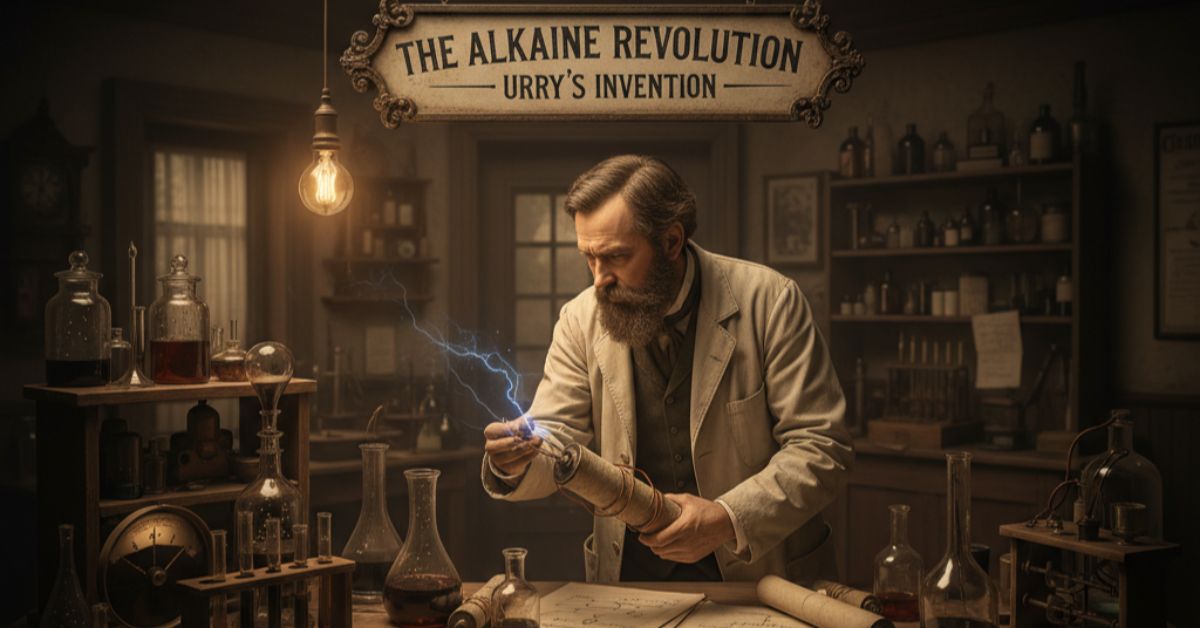We’ve all been there, right? The TV remote suddenly goes dead. The toy robot just stops moving. The flashlight won’t turn on. What do we do? We simply pop in a new battery without a second thought. This little act is thanks to one of the most crucial inventions of the 20th century: the alkaline battery. It’s a small, cylindrical source of energy that has made our modern, portable lives possible. But have you ever taken a moment to think about its origins? Who invented it, and what inspired them? Let’s explore the captivating history behind the alkaline battery invention.
The Dark Ages: Life Before Alkaline Batteries
Before the alkaline battery came along, there was the zinc-carbon battery, often referred to as a “heavy-duty” battery. It did the job, but it had some major drawbacks.
- It died quickly: These batteries couldn’t hold much power, so they ran out in no time.
- It leaked often: The acidic paste inside would sometimes escape, causing damage to the devices they powered.
- It hated the cold: If you used them in cold conditions, like during a winter camping trip, their power would drop off sharply.
As portable transistor radios and other gadgets gained popularity in the 1950s, people were on the lookout for a better, more dependable power source. That’s when the stage was set for a new invention.
The Inventor: Meet Lewis Urry
Lewis Urry, a Canadian chemical engineer, is the genius behind the modern alkaline battery. He worked at the Eveready Battery Company, which was part of Union Carbide.
His goal was quite ambitious: to design a battery that would last longer and help increase the company’s sales. Fortunately, he wasn’t starting from scratch. The famous inventor Thomas Edison had already explored alkaline battery chemistry decades earlier. But it was up to Urry to make it smaller, more affordable, and ready for everyday use.
The “Eureka!” Moment: Building a Better Battery
Urry and his team got busy in their Ohio lab, knowing they had to make some serious changes to the battery’s internal chemistry.
The traditional zinc-carbon batteries used an acidic paste, but Urry had a lightbulb moment—he wanted to try an alkaline substance instead, specifically potassium hydroxide. This new alkaline electrolyte was not only more stable but also didn’t corrode the battery’s components.
He also made a smart tweak to the design by using powdered zinc for the center anode. This increased the surface area for chemical reactions, making the battery way more efficient.
According to the story, Urry built his first prototypes using small D-cell batteries. To see how they performed, he loaded two toy cars: one with his new alkaline battery and the other with the old zinc-carbon battery. He placed them on the lab floor and observed. The car with the old battery quickly sputtered and stopped, while the one with the new alkaline battery just kept going… and going… and going. At that moment, he realized he had a winner on his hands.
Powering the World: The Alkaline Battery Launches
Urry’s invention was a remarkable success for the company. In 1959, the Eveready Battery Company unveiled this new power source to the world, giving it a name that showcased its most impressive quality: long-lasting performance. They called it the Energizer.
Not long after, a competitor named Duracell popped up, also focusing on alkaline batteries. The well-known “copper top” became a hallmark of trustworthy power. This competition was key in making alkaline batteries the preferred option for everyday devices.
A Lasting Legacy: How the Alkaline Battery Changed Everything
The invention of the alkaline battery was a quiet yet impactful change in our tech landscape. It may not have made headlines like the first airplane or the telephone, but it certainly set the stage for a wave of new gadgets.
This innovation led to the explosion of portable electronics, such as:
- Transistor radios
- Portable cassette players (like the iconic Sony Walkman)
- Reliable flashlights and toys
- Calculators and those early digital cameras
For decades, it held the title of the world’s most popular battery. Even today, despite the prevalence of rechargeable lithium-ion batteries, the simple alkaline AA or AAA is still a go-to choice in many homes because it’s affordable, reliable, and widely available.
Conclusion
The next time you replace a battery in your remote or clock, take a moment to appreciate it. That little cylinder is a product of brilliant engineering and a desire to solve a simple problem.
Lewis Urry and his team’s invention of the alkaline battery gave us the dependable, long-lasting power we needed to free ourselves from wall sockets. It’s incredible how such a small item can create such a huge impact.
Frequently Asked Questions
Q: Who actually invented the alkaline battery?
A: Lewis Urry, a Canadian engineer at the Eveready Battery Company, is recognized for creating the modern alkaline battery in the 1950s.
Q: When were alkaline batteries invented?
A: The major breakthrough occurred in 1957, and the first commercial alkaline batteries hit the market in 1959 under the Energizer brand.
Q: What did we use before alkaline batteries?
A: Before the alkaline era, the go-to battery was the zinc-carbon battery. They were cheaper to produce but didn’t last as long and were more likely to leak.
Q: Are alkaline batteries still good to use today?
A: Absolutely! For many everyday, low-drain devices like remote controls, wall clocks, and kitchen scales, alkaline batteries are a solid and cost-effective choice. For high-drain devices like video game controllers, many people now prefer to use rechargeable batteries.











